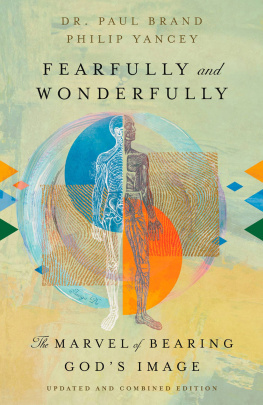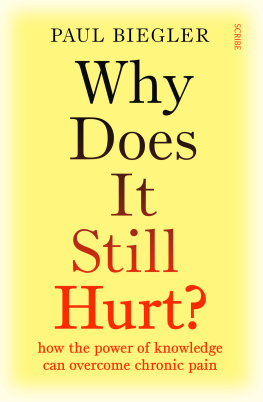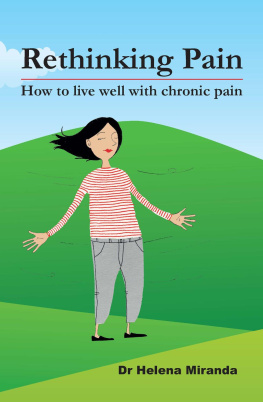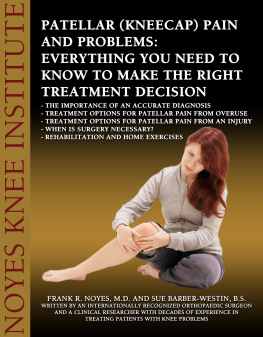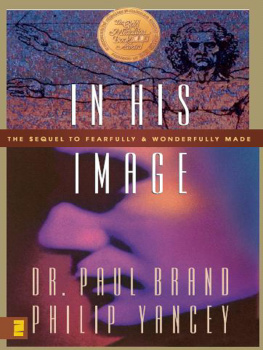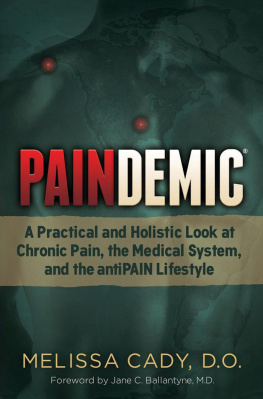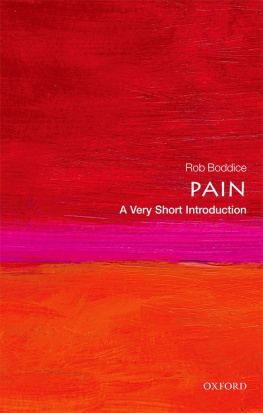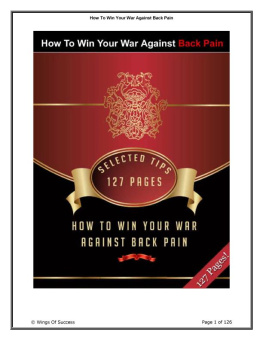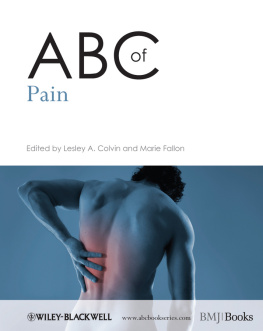ZONDERVAN
The Gift of Pain
Copyright 1993, 1997 by Paul Brand and Philip Yancey
Requests for information should be addressed to:
Zondervan, 3900 Sparks Drive SE, Grand Rapids, Michigan 49546
Zondervan titles may be purchased in bulk for educational, business, fundraising, or sales promotional use. For information, please email SpecialMarkets@Zondervan.com.
ISBN 978-0-310-36305-7 (ebook)
Library of Congress Cataloging-in-Publication Data
Brand, Paul W.
The gift of pain / Dr. Paul Brand and Philip Yancey. 1st ed.
p. cm.
Includes bibliographical references and index.
ISBN-13: 978-0-310-22144-9 (softcover)
ISBN-10: 0-310-22144-7 (softcover)
1. Brand, Paul W. 2. PhysiciansUnited StatesBiography.
3. PhysiciansGreat BritainBiography. 4. PhysiciansIndiaBiography.
5. LeprosyBiography. 6. PainBiography. I. Yancey, Philip. II. The Gift
Nobody Wants.
R154.B779A3 1993
610'.92dc20
92-56225
Epub Edition June 2020 9780310363057
A hardcover edition of this book was published by HarperCollinsPublishers and Zondervan in 1993 under the title Pain: The Gift Nobody Wants. A first softcover edition was published in 1995 under the title The Gift Nobody Wants.
The excerpt from Show Your Tongue by Gnter Grass, translated by John E. Woods, copyright 1988 by Luchterhand Literaturverlag GmbH, Darmstadt. English tranlation copyright 1989 by Harcourt Brace & Company, is repinted by permission of the publisher.
The excerpt from Anatomy of an Illness as Perceived by the Patient by Norman Cousins is repinted by permission of W. W. Norton & Co., Inc.
All Scripture quotations, unless otherwise indicated, are taken from The Holy Bible: New International Version. NIV. Copyright 1973, 1978, 1984, 2011 by Biblica, Inc. Used by permission of Zondervan. All rights reserved worldwide. www.Zondervan.com. The "NIV" and "New International Version" are trademarks registered in the United States Patent and Trademark Office by Biblica, Inc.
Any internet addresses (websites, blogs, etc.) and telephone numbers in this book are offered as a resource. They are not intended in any way to be or imply an endorsement by Zondervan, nor does Zondervan vouch for the content of these sites and numbers for the life of this book.
All rights reserved. No part of this publication may be reproduced, stored in a retrieval system, or transmitted in any form or by any means-electronic, mechanical, photocopy, recording, or any other-except for brief quotations in printed reviews, without the prior permission of the publisher.
Printed in the United States of America
Contents
Guide
Whenever I let my mind wander, and wonder who I would like to have been if I had not been born C. Everett Koop, the person who comes to mind most frequently is Paul Brand. I had known fragments of his life story for years. I had heard him speak on several occasions and was fascinated by his direct approach and gentle manner. Then, after I joined the Public Health Service as Surgeon General in 1981, I found that, in a sense, he worked for me.
Paul Brand was then directing part of the research for the oldest leprosy facility in the United States, the Gillis H. Long Hansens Disease Center in Carville, Louisiana. There I came in close contact with him, watched him at work in the laboratory, witnessed his interaction with patients, and noted the strong and sincere mentoring relationship that developed between Paul Brand and his students, young and old, able and disabled. During my watch, he justified the enormous expenditure on research in leprosy, a disease that affects few in the United States, by demonstrating the applicability of that research to patients with diabetes, which affects 25 million.
What a joy to see Paul Brand in action! Humble when he could have been proud; kind above and beyond the need of the moment; gentle, to what might seem an unnecessary degree; and, finally, competent, with a capital C.
Shortly after I assumed my post as Surgeon General, my wife, Betty, had a joint replaced in her right hand with a marvelous Teflon substitute. The surgery was excellent, but because of lack of attention to the nonglamorous, very essential bits of postoperative care, she ended up with a seriously disabled hand. She grieved for the loss of her hand for a short time, but since then she has managed well with a functional hand that can flex, although she cannot extend her fingers.
Paul Brand is as good a hand surgeon as there is in the world, so I took Betty to a Public Health Service meeting in Phoenix, Arizona, where I knew Paul would be on the program. I asked whether he would see her in consultation, which he willingly and immediately did. In watching his interaction with my wife and her hand, everything Id heard and known about Paul Brand came into exquisite focus. His humility was evident from the start. His gentleness was unbelievable. His kindness in the assessment of her condition and in the advice he gave her was enough to make up for the bad news he had to deliver. And of course competence undergirded it all.
I used to teach medical students, When you examine an abdomen, watch the patients face, not his belly. What impressed me most was that Paul Brand, knowing what might hurt, kept his eyes trained on Bettys face. He apologized immediately if he hurt her. He never downplayed her discomfort, but imparted a kind of philosophy about pain that put it in a different realm.
I recount that story as a fitting introduction to this book because the book, while it conveys the story of a fascinating life, is mainly about one mans growing understanding of painits purpose, origins, and relief. As a surgeon, scholar, investigator, and philosopher gifted with rare insight, Paul Brand has lived and worked among the pain-afflicted. His extraordinary experiences have a strong thematic unity which allows him to present a rather startling perspective on pain. But before you think that might mean dull reading, there are wonderful helps in this book for each of us because Paul Brand opens the window onto new ways of looking at pain, and that translates into something of worth for you and me.
Paul Brand offers an opportunity to look at pain not as your enemy, but as your friend. I know a lot about painI have dealt with it all of my professional lifeyet I gained a more profound understanding of it from this book. Were I a victim of chronic pain, I would probably call the knowledge gained a godsend.
I once gave Paul Brand the Surgeon Generals Medallion, the highest honor a Surgeon General can bestow on a civilian. After finishing this book, Id do it again, if I could. My esteem for Paul Brand is greater than ever.
He jests at scars who never felt a wound.
Shakespeare, Romeo and Juliet
Tanya was a four-year-old patient with dark, flashing eyes, curly hair, and an impish smile. I examined her at the national leprosy hospital in Carville, Louisiana, where her mother had brought her for a diagnosis. A cloud of tension hung in the air between the little girl and her mother, but I noticed that Tanya seemed eerily unafraid. She sat on the edge of the padded table and watched impassively as I began to remove blood-soiled bandages from her feet.
Testing her swollen left ankle, I found that the foot rotated freely, the sign of a fully dislocated ankle. I winced at the unnatural movement, but Tanya did not. I resumed unwrapping the bandages. Are you sure you want these sores healed, young lady? I said, trying to lighten the atmosphere in the room. You might have to start wearing shoes again. Tanya laughed, and I thought it odd that she did not flinch or whimper as I removed the dressings next to her skin. She looked around the room with an expression of faint boredom.


